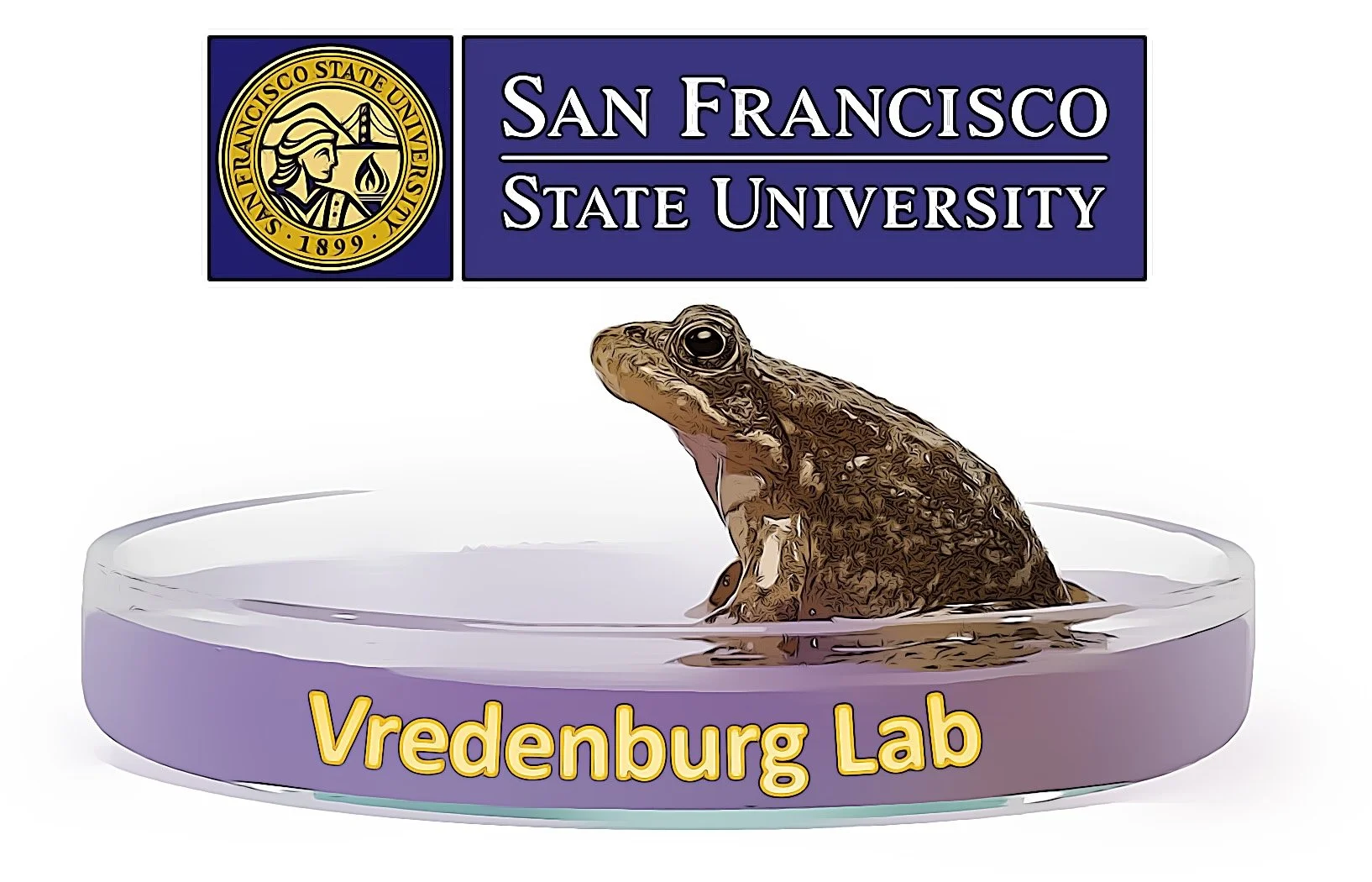Research in the Vredenburg lab focuses broadly on ecology, evolution and conservation in the context of climate change. Most projects in the lab focus on amphibians. The lab incorporates elements of population, community, and behavioral ecology to investigate hypotheses that can explain vertebrate species loss as our climate changes. These include studies of the impacts of emerging infectious disease, introduced predators, and habitat destruction. Our approach uses a combination of field and lab-based experiments as well as comparative methods using museum specimens.
Major Research Topics
Climate Change Ecology. This is the overarching theme of the research and includes:
Ecology of emerging infectious fungal and viral diseases in amphibians
How does host skin microbiome (symbiotic bacteria) affect disease?
How does pathogen invasion history affect current disease dynamics?
How does host behavior affect pathogen transmission?
Mountain Ecosystems as Sentinels of Climate Change
How do humans impact aquatic and terrestrial montane systems including disease transmission in wildlife?
Ecology of Emerging Infectious Diseases in Amphibians
Chytridiomycosis, a disease caused by the chytrid fungal pathogens Batrachochytrium dendrobatidis and Batrachochytrium salamandrivorans, is causing massive epidemics in amphibians around the world. Why? Amphibians are considered one of the most successful lineages of terrestrial vertebrates, and have a long history of survival (>360 million years); yet, today they are the most imperiled of all land vertebrates with over 40% being threatened with extinction.
Why study disease in wildlife?
Emerging infectious diseases are not only a threat to wildlife but to humans as well (e.g. Ebola, SARS, AIDS, and COVID-19). Our best hope in controlling diseases for the benefits of humans, and our planet, is to understand the underlying ecological processes that govern them. In my lab, we study chytridiomycosis because it is devastating amphibians on a scale never seen before. With over 500 species affected, and potentially 200 species driven to extinction, chytridiomycosis is the most significant disease recorded in vertebrates. I have personally witnessed mass die offs of frogs in the Sierra Nevada mountains, California, USA. I witnessed, and documented the deaths of thousands of frogs in Sequoia and Kings Canyon National Parks (see Vredenburg et al. 2010; National Geographic article by Jennifer Holland:; see YouTube talk: https://www.youtube.com/watch?v=Q5whEjasmAI ).
Our research includes aspects of phylogeography, genetics, breeding behavior, growth, and movement dynamics of amphibians. We incorporate these data in a variety of ways (e.g. stage structured disease models) to predict the spread of the pathogen in the wild and its effect on host species. We have documented the catastrophic impact of chytridiomycosis in natural populations. To better understand the dynamics of the disease, we are investigating the transmission of the fungal pathogen between and within the life stages of the host. Like many other emergent diseases, little is known about the origin of the pathogens (B. dendrobatidis and B. salamandrivorans) that cause the disease. There is considerable debate whether these are novel pathogens or newly virulent strains. One thing is clear, the resulting health of the hosts can vary dramatically depending on many factors. Our research takes place mostly in field settings, but also in the lab and in natural history museums. Currently we are tracking the spread of the pathogens globally using natural history collections that contain amphibian specimens collected over the last century and a half. The outcome of our current research will help shape recovery efforts for threatened species, will help inform models for this disease, and will also help with our general understanding of how diseases work in general. Below we provide some details on the two pathogens that cause chytridiomycosis and on the studies we are currently undertaking to better understand the skin microbiome of amphibians: the symbiotic species of bacteria and other microbes that live on the skin of amphibians.
CLICK ON THE LINKS BELOW TO LEARN MORE





